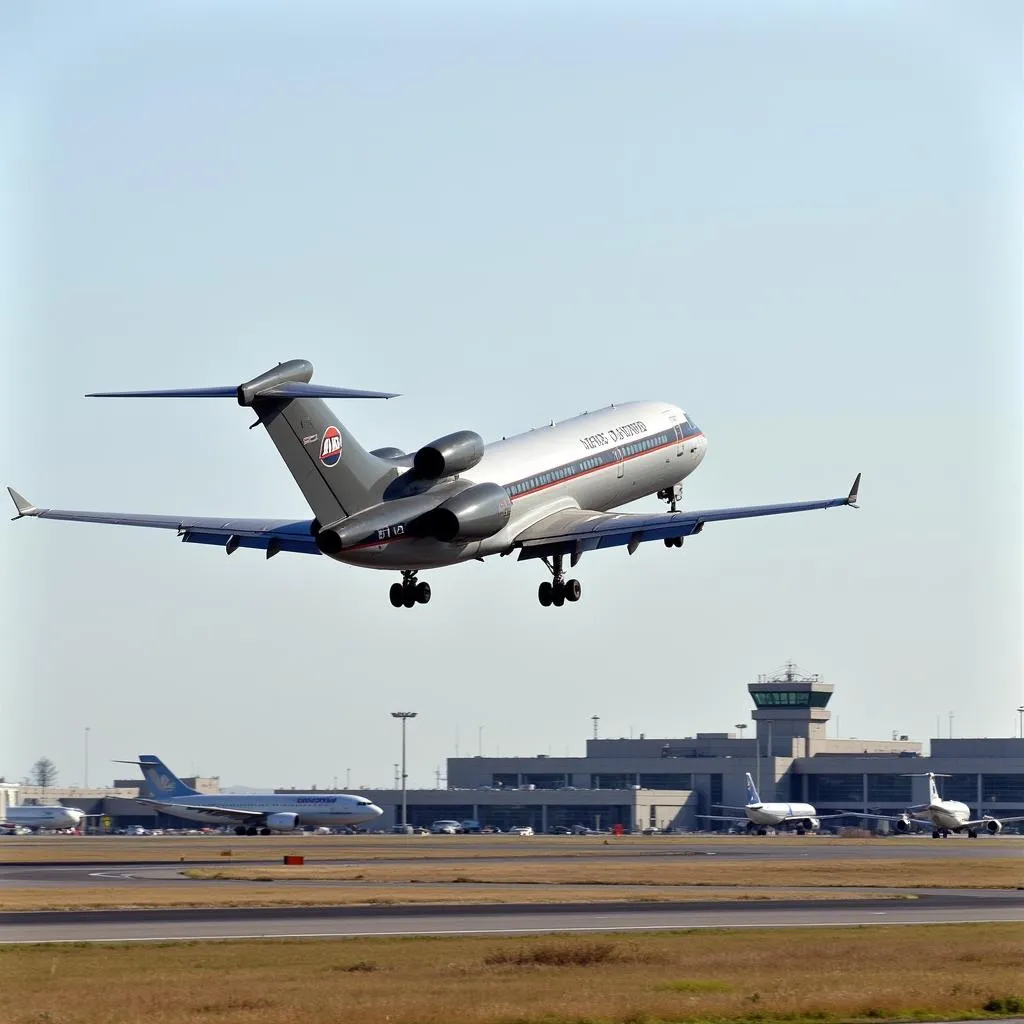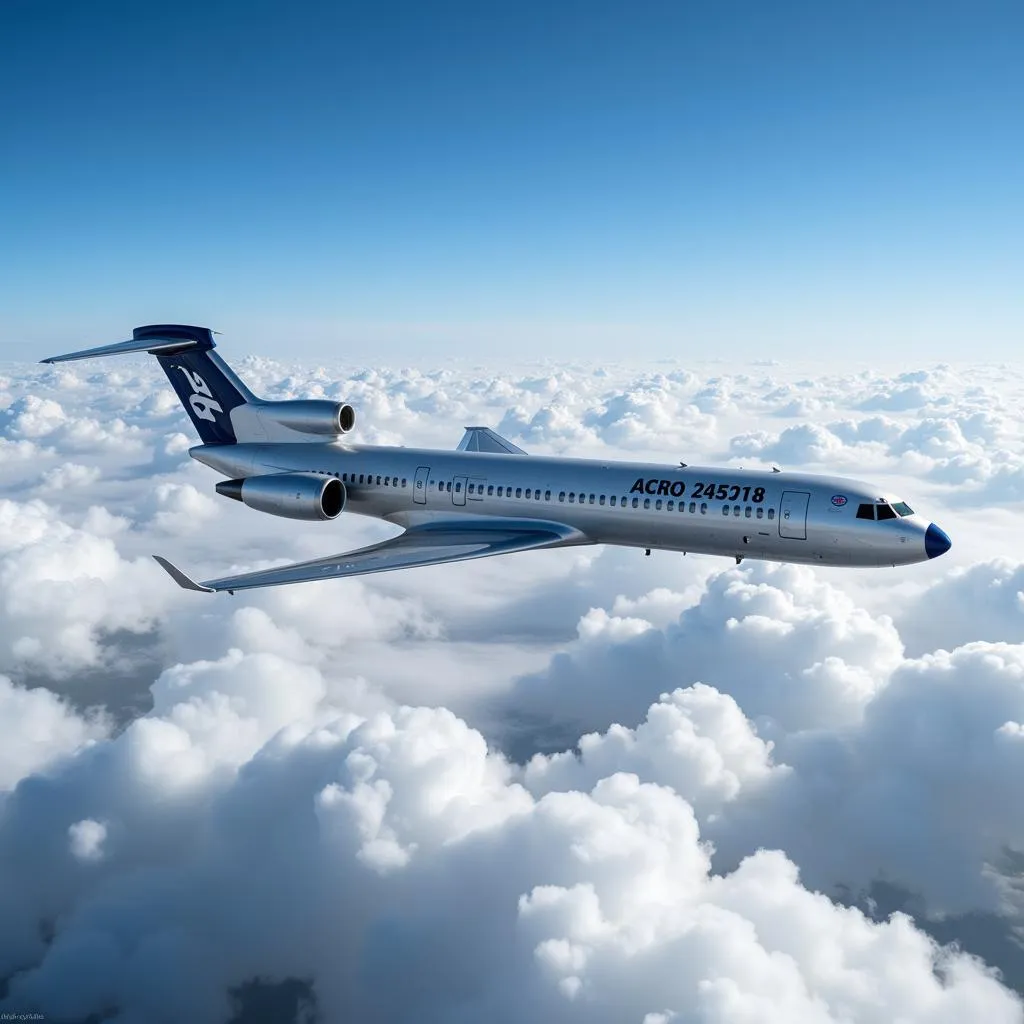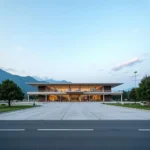A DC-9 aircraft leaves Midway Airport, its engines roaring as it ascends into the clear blue sky. This scene, once commonplace, now evokes a sense of nostalgia for a bygone era of air travel. The McDonnell Douglas DC-9, with its iconic T-tail design and rear-mounted engines, was a familiar sight at airports across the globe for decades. This article delves into the history of this iconic aircraft, exploring its design, variants, and the reasons behind its enduring legacy.
The Birth of a Workhorse: Designing the DC-9
The DC-9 was born out of a need for a short-to-medium-range jetliner that could operate efficiently from smaller airports. McDonnell Douglas, recognizing this demand, embarked on the development of a twin-engine jet that would revolutionize short-haul travel. The DC-9’s design was characterized by its innovative features:
- Rear-mounted engines: This configuration freed up space in the wings for fuel storage and allowed for a cleaner wing design, improving aerodynamic efficiency.
- T-tail configuration: Placing the tail high on the fuselage reduced the risk of engine damage from foreign object debris (FOD) during takeoff and landing, particularly on shorter runways.
- Simple and robust design: The DC-9 was designed for ease of maintenance and operation, contributing to its cost-effectiveness and popularity among airlines.
 DC-9 taking off from Midway Airport
DC-9 taking off from Midway Airport
A Family of Jets: Exploring the DC-9 Variants
The success of the initial DC-9 model led to the development of several variants, each tailored to meet specific market demands:
- DC-9-10: The original model, designed for shorter routes with a capacity of up to 90 passengers.
- DC-9-30: A stretched version with a larger capacity of up to 115 passengers and greater range, becoming the most popular variant.
- DC-9-40: A further stretched version, accommodating up to 125 passengers and offering even greater range.
- DC-9-50: The longest variant, capable of carrying up to 139 passengers and designed for longer routes.
These variants ensured the DC-9’s versatility, making it suitable for a wide range of airlines and routes, from regional carriers to major airlines operating short-haul flights.
The Enduring Appeal of the DC-9
Despite its production ending in 1982, the DC-9 continued to grace the skies for many years, with some aircraft remaining in service well into the 21st century. What contributed to this enduring legacy?
- Reliability: The DC-9 earned a reputation for its reliability and ease of maintenance, crucial factors for airlines seeking to minimize operating costs.
- Fuel efficiency: The aircraft’s design and engine technology made it relatively fuel-efficient, particularly in comparison to its contemporaries.
- Short-field performance: Its ability to operate from shorter runways made it ideal for serving smaller airports and regional routes.
 DC-9 soaring above the clouds
DC-9 soaring above the clouds
The DC-9: A Lasting Legacy in Aviation
The McDonnell Douglas DC-9, though no longer in production, left an undeniable mark on the aviation industry. Its innovative design, versatility, and economic viability made it a favorite among airlines and passengers alike. Next time you see a DC-9 at an air museum or in a photograph, take a moment to appreciate its contribution to the evolution of air travel.
FAQs about the DC-9 Aircraft
1. What was the maximum speed of a DC-9 aircraft?
The DC-9 had a maximum cruising speed of around 567 mph (912 km/h).
2. How many DC-9 aircraft were built?
McDonnell Douglas produced a total of 976 DC-9 aircraft in all its variants.
3. What engine did the DC-9 use?
The DC-9 was powered by Pratt & Whitney JT8D turbofan engines.
4. What is the wingspan of a DC-9?
The wingspan of a DC-9 varied slightly depending on the variant, but it was generally around 93 feet (28 meters).
5. Where can I see a DC-9 aircraft today?
Many DC-9 aircraft are preserved in aviation museums worldwide, offering a glimpse into this iconic aircraft’s history.
For further inquiries about the DC-9 aircraft or any other aviation-related topics, please do not hesitate to contact us at AirPort BBI. Our team of experts is available 24/7 to assist you. You can reach us at +13089626264, email us at news.bbi@gmail.com, or visit our office at 404 Bothwell St, Oxford, NE 68967, USA. We look forward to hearing from you!

